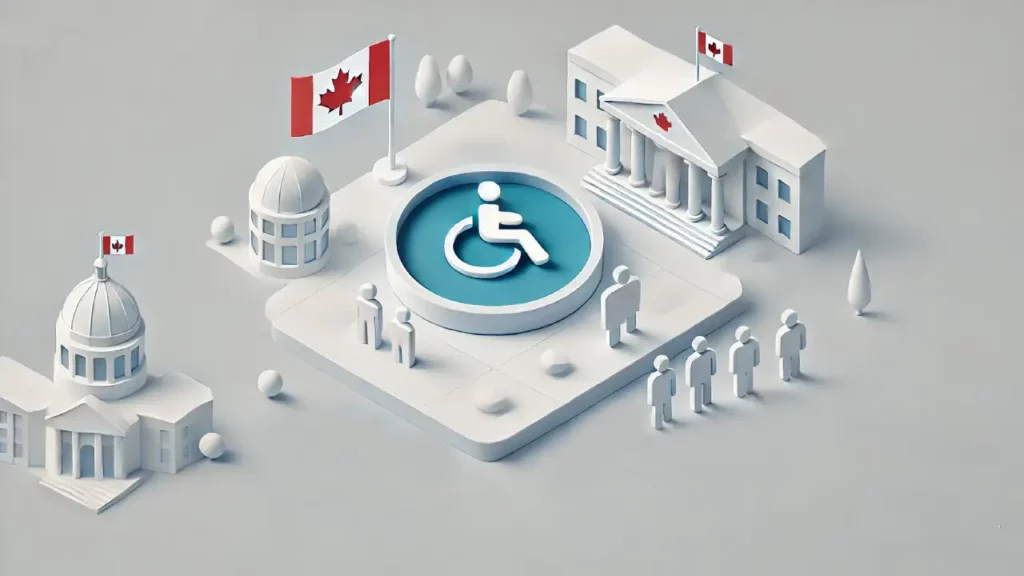Web accessibility in Canada is governed by a robust framework of laws and guidelines designed to eliminate barriers for individuals with disabilities. At the heart of this framework is the Canadian Standard on Web Accessibility (2011), which mandates that all Canadian government websites and web applications conform to the Web Content Accessibility Guidelines (WCAG) 2.0 Level AA. This standard ensures that web content is perceivable, operable, understandable, and robust enough to meet the needs of diverse users.
In addition to the federal standards, several provinces have enacted their own accessibility laws. For instance, Ontario’s Accessibility for Ontarians with Disabilities Act (AODA) sets stringent requirements for both public and private sector organizations to ensure their digital content is accessible. This includes providing closed captions for videos and ensuring websites are navigable via keyboard.

Key Components of the Standards
1. Perceivable Information
The content must be presented in ways that users can perceive. This includes providing text alternatives for non-text content, making it easier for users to see and hear content, and ensuring that content can be presented in different ways without losing meaning.
2. Operable Interface
Users must be able to navigate and interact with the website. This involves making all functionality available from a keyboard, giving users enough time to read and use the content, and not designing content in a way that is known to cause seizures.
3. Understandable Information
The information and the operation of the user interface must be understandable. This includes making text readable and understandable, ensuring web pages appear and operate in predictable ways, and helping users avoid and correct mistakes.
4. Robust Content
Content must be robust enough that it can be interpreted by a wide variety of user agents, including assistive technologies. This means using well-established web standards and ensuring compatibility as technology evolves.

Canadian Web Accessibility Standards in Action
The Role of Government and Organizations
The Accessible Canada Act (2019) is another crucial piece of legislation aimed at creating a barrier-free Canada by 2040. This act covers federally regulated sectors, including banking, telecommunications, and transportation, ensuring they adhere to WCAG 2.0 Level AA standards.Organizations under this jurisdiction are required to provide accessible digital content and can face fines of up to $250,000 for non-compliance.
Moreover, the Treasury Board of Canada Secretariat plays a pivotal role in monitoring compliance through various assessments and reports, ensuring that departments align with these standards.
Why Compliance Matters
Adhering to web accessibility standards is not only about legal compliance but also about fostering an inclusive digital environment. According to recent statistics, about 22% of Canadians aged 15 and older identify as having a disability. By making web content accessible, organizations can enhance user experience, improve SEO rankings, and broaden their audience reach.
Canadian Web Accessibility Standards: Practical Steps for Compliance
To comply with these standards, organizations can follow these practical steps:
- Conduct an Accessibility Audit: Regularly audit your website to identify and fix accessibility issues.
- Provide Training: Ensure your web development and content teams are trained in accessibility best practices.
- Use Accessible Design Tools: Utilize tools that help in creating accessible content, such as screen readers and accessibility checkers.
- Engage Users: Involve users with disabilities in testing your website to gain valuable feedback.
Practical Implementation of Canadian Web Accessibility Standards
Having covered the basics of the Canadian web accessibility standards, it’s essential to delve into the practical aspects of implementing these standards. This section will explore detailed steps and best practices that organizations can adopt to ensure their digital content meets the required accessibility criteria.
Conducting an Accessibility Audit
A thorough accessibility audit is the first step in identifying areas of non-compliance. Here’s a structured approach to performing an effective audit:
- Use Automated Tools: Tools like WAVE, Axe, and Lighthouse can quickly scan your website and identify common accessibility issues.
- Manual Testing: While automated tools are useful, they can’t catch all issues. Manual testing by navigating your site using only a keyboard, or employing screen readers like JAWS or NVDA, is crucial.
- User Testing: Involving users with disabilities in testing your website provides valuable insights and ensures that real-world accessibility issues are addressed.

Training Your Team
Ensuring that your web development and content teams are well-versed in accessibility best practices is crucial. Consider the following strategies:
- Regular Workshops and Training Sessions: Conduct workshops to educate your team on the latest accessibility guidelines and tools.
- Certifications: Encourage team members to obtain certifications in web accessibility, such as those offered by the International Association of Accessibility Professionals (IAAP).
Using Accessible Design Tools
Incorporating accessibility into your design process can prevent issues from arising in the first place. Here are some tools and practices to consider:
- Design Software: Use design software that supports accessibility features. Adobe XD and Figma, for instance, offer plugins and features that help designers create accessible content.
- Color Contrast Checkers: Tools like Contrast Checker ensure that your text is readable against its background, meeting the WCAG color contrast requirements.
Content Creation Best Practices
Creating accessible content involves more than just technical compliance. It’s about ensuring that all users can interact with and understand your content. Here are some best practices:
- Use Clear and Simple Language: Avoid jargon and complex language. This makes content accessible to users with cognitive disabilities.
- Structure Content with Headings: Use proper headings (H1, H2, H3) to organize content logically, making it easier for screen readers to navigate.
- Provide Text Alternatives: For all non-text content such as images and videos, provide text alternatives. This includes alt text for images and transcripts for videos.
Canadian Web Accessibility Standards in Everyday Use
Applying Standards to Multimedia Content
Multimedia content like videos and podcasts are increasingly popular, but they pose unique accessibility challenges. To meet the Canadian web accessibility standards, consider the following:
- Closed Captions and Subtitles: Ensure that all videos have closed captions. This helps users who are deaf or hard of hearing.
- Audio Descriptions: Provide audio descriptions for video content to describe visual information for users who are blind or have low vision.
- Transcripts: Offer transcripts for audio content, allowing users who cannot hear the audio to read the content instead.
Addressing Common Accessibility Issues
Despite best efforts, some accessibility issues may still arise. Here are common issues and how to address them:
- Keyboard Accessibility: Ensure that all interactive elements, such as forms and buttons, are accessible via keyboard.
- Form Labels and Instructions: Properly label form fields and provide clear instructions to assist users with filling out forms correctly.
- Error Messages: Ensure error messages are descriptive and provide guidance on how to correct the issue.
Monitoring and Maintaining Compliance
Web accessibility is an ongoing process. Regularly monitoring your website for compliance with the Canadian web accessibility standards is crucial. Here are some tips:
- Regular Audits: Schedule periodic audits to catch and fix new accessibility issues.
- User Feedback: Encourage feedback from users to identify and address accessibility problems quickly.
- Stay Updated: Keep abreast of updates to the WCAG and Canadian accessibility laws to ensure ongoing compliance.

Conclusion
Creating an accessible web environment is a journey that requires commitment and continuous effort. By following the Canadian web accessibility standards and implementing the best practices outlined in this article, organizations can make their digital content accessible to all users, enhancing their experience and fostering inclusivity.
At Bwired IT Services, we understand the complexities involved in making your website or application compliant with Canadian web accessibility standards. Our team of experts is dedicated to ensuring that your digital presence is inclusive, accessible, and user-friendly for everyone. Whether you need an accessibility audit, design adjustments, or content creation that meets WCAG guidelines, we can help you every step of the way.
Start your accessibility journey today by conducting a thorough audit of your website. Implement the changes necessary to comply with the Canadian web accessibility standards and make your digital content accessible to everyone. Partner with Bwired IT Services to ensure your site not only meets legal requirements but also provides an exceptional user experience for all visitors.
